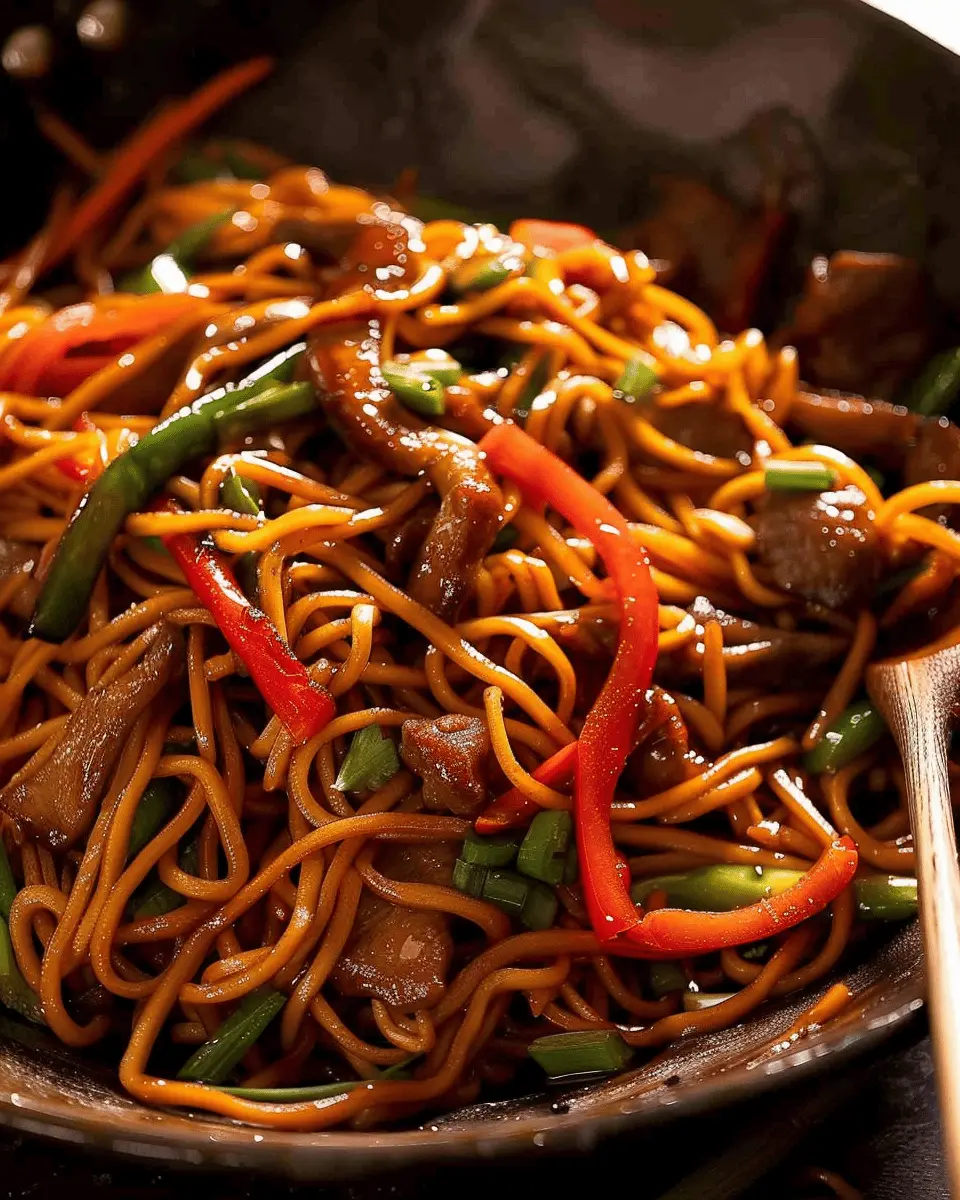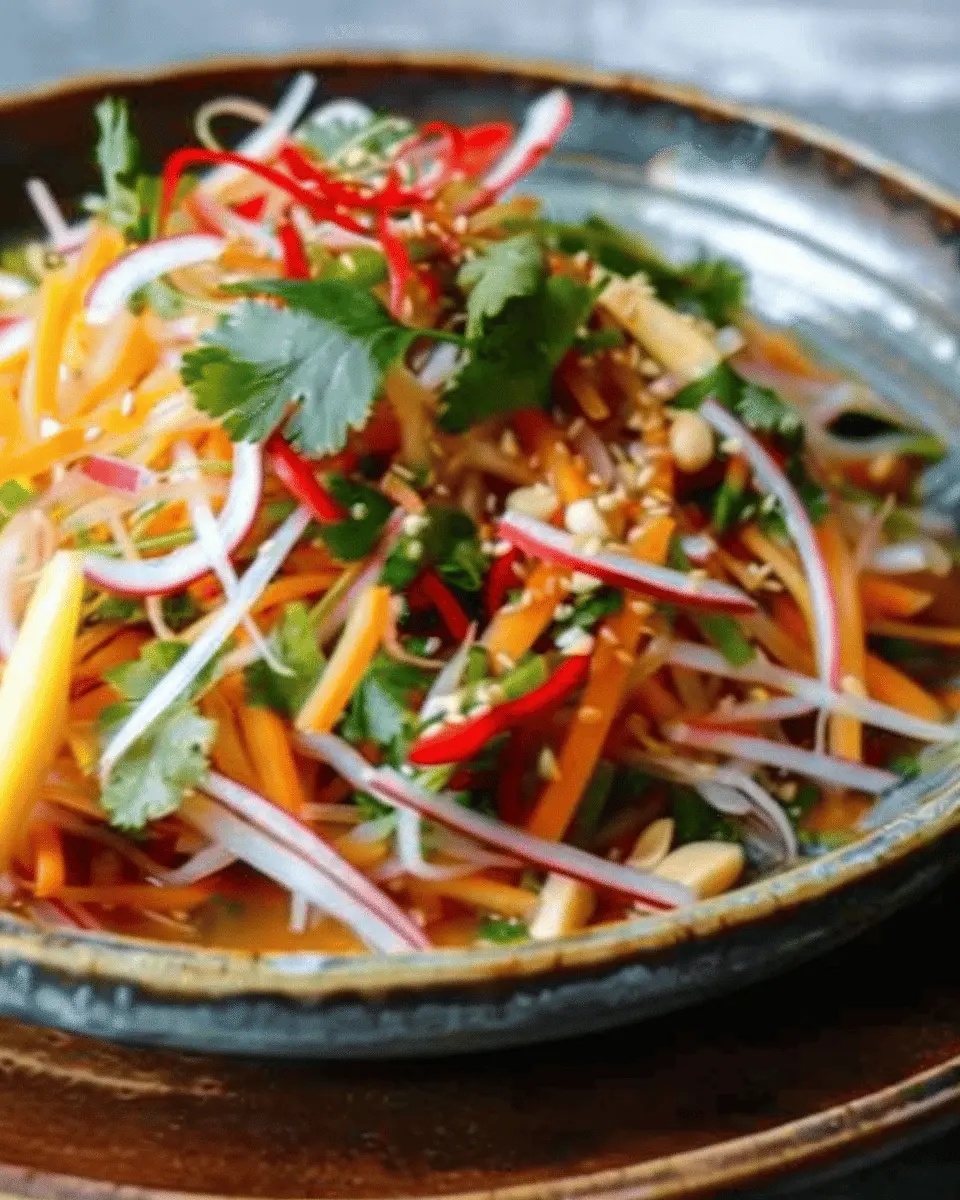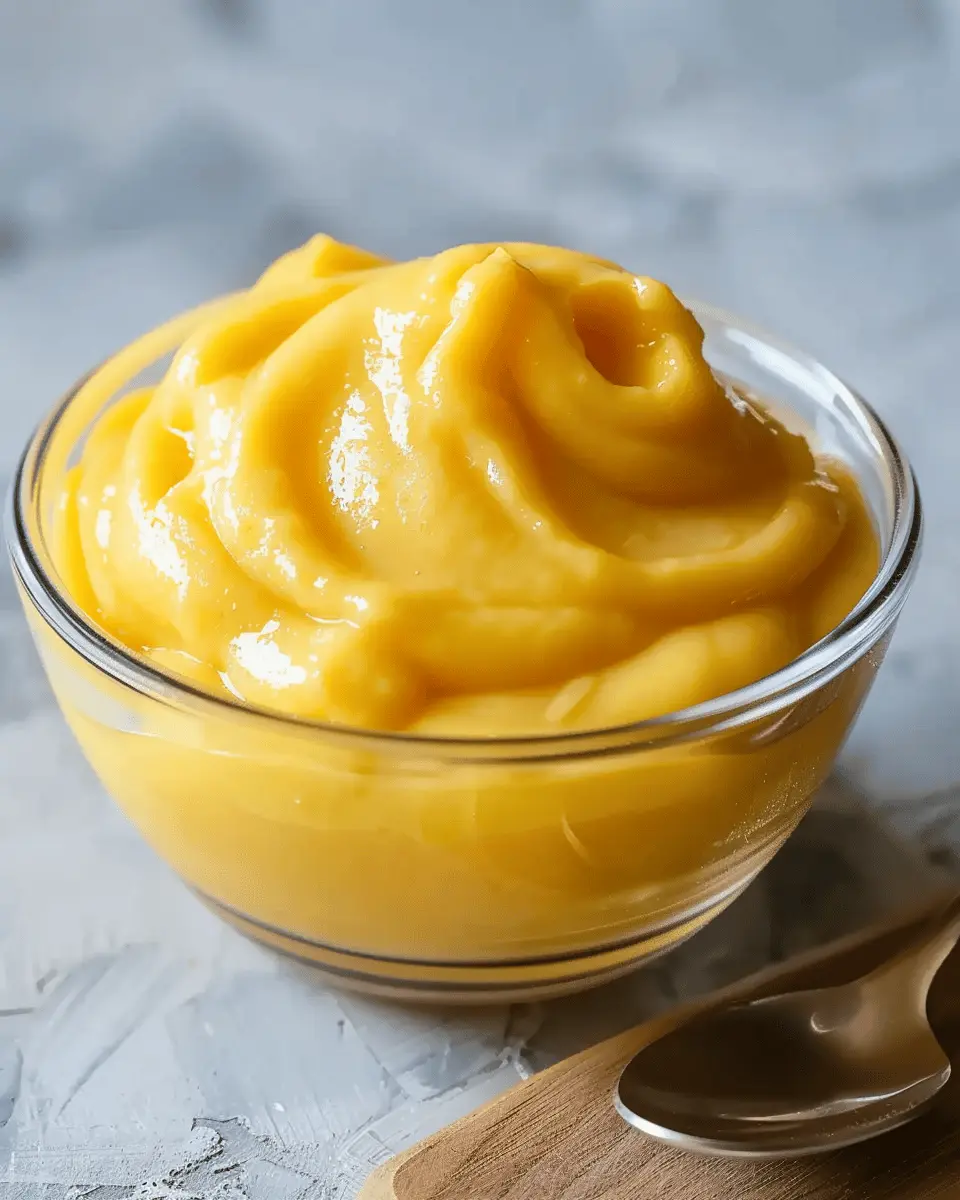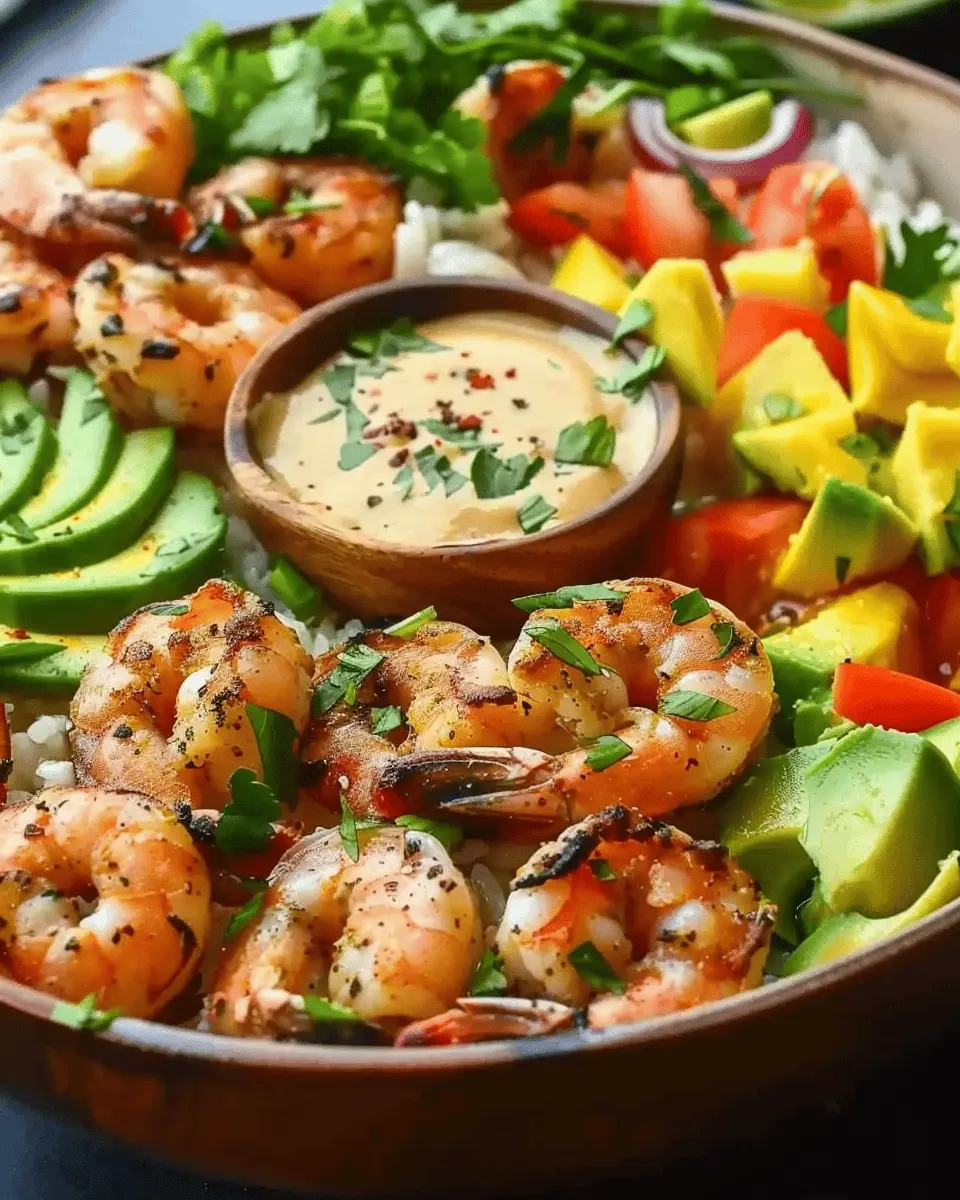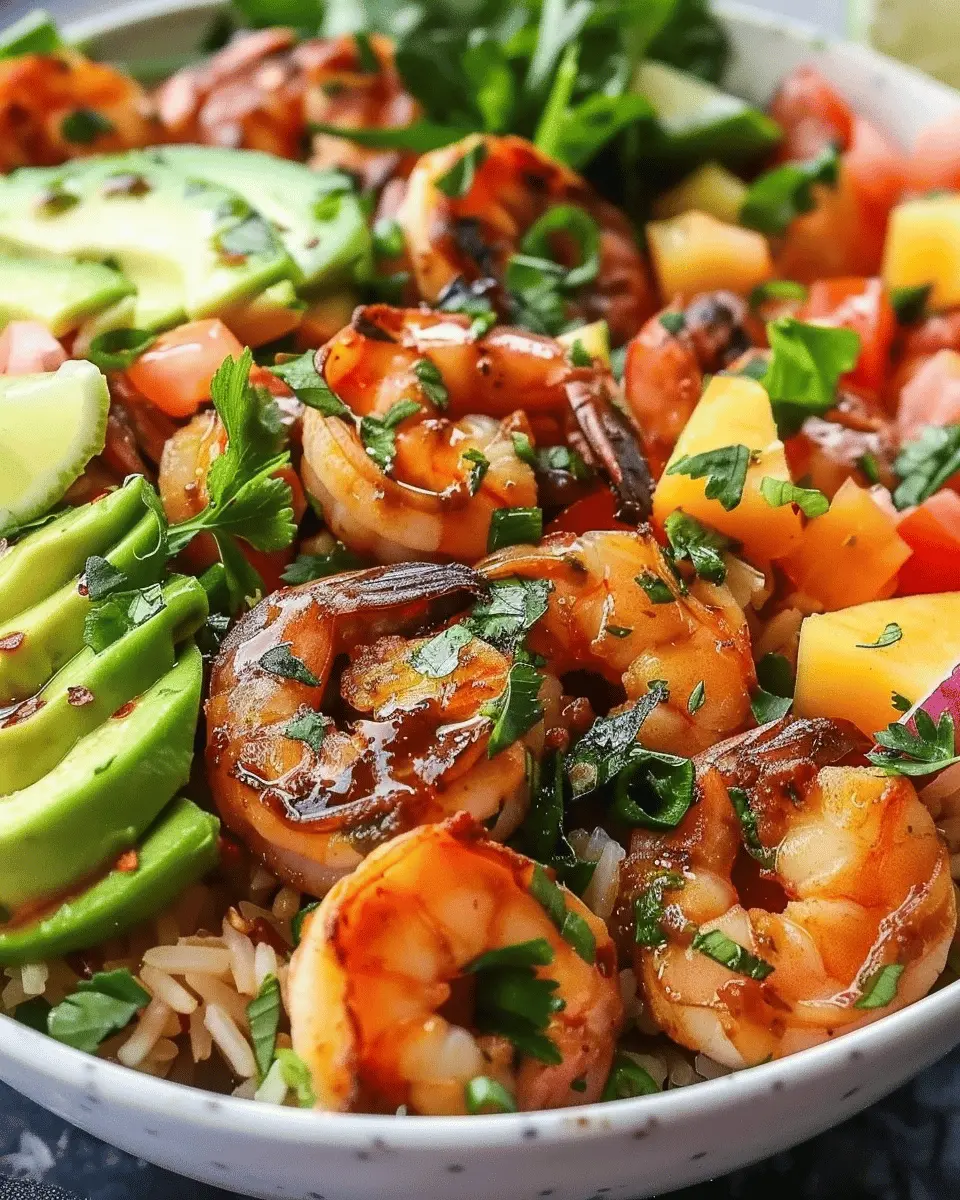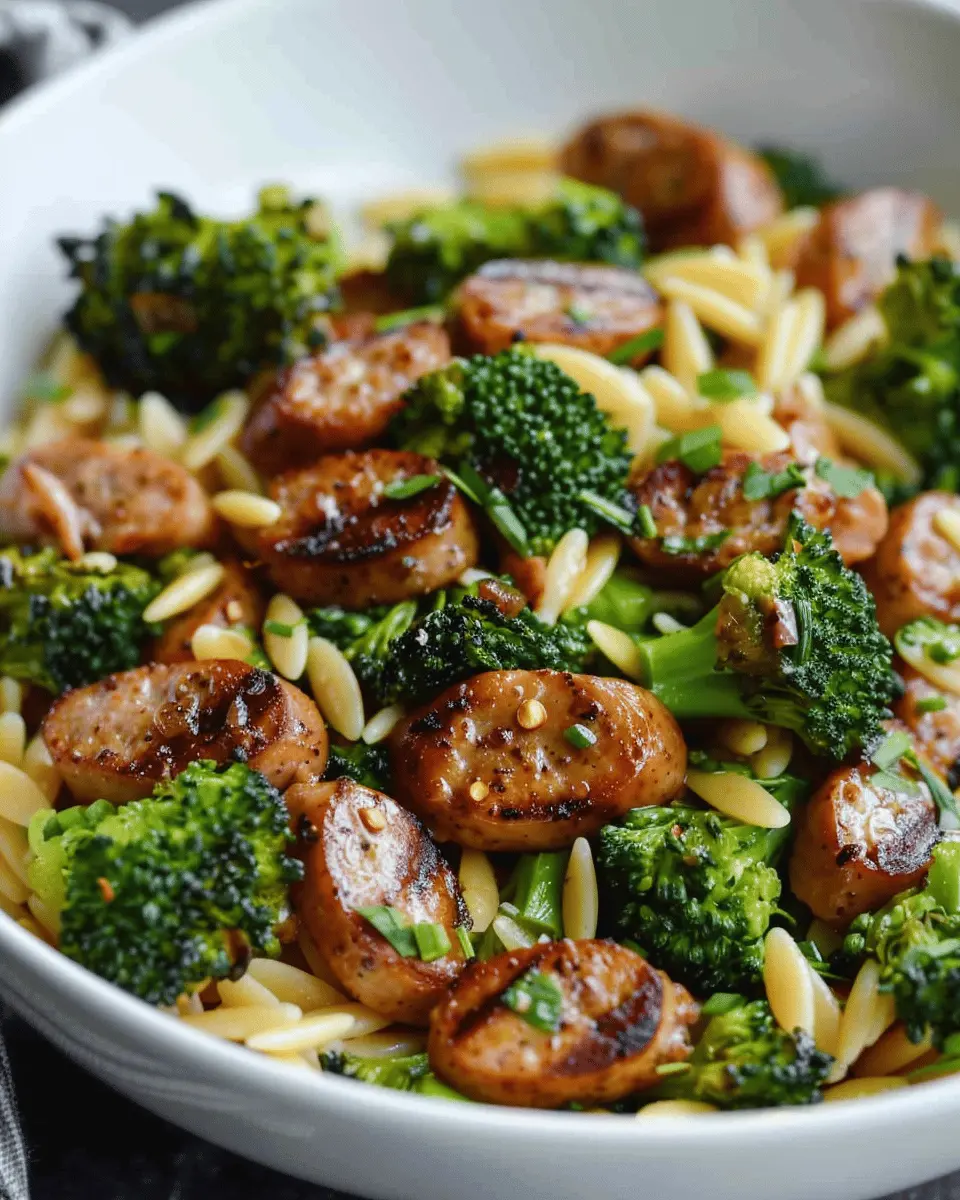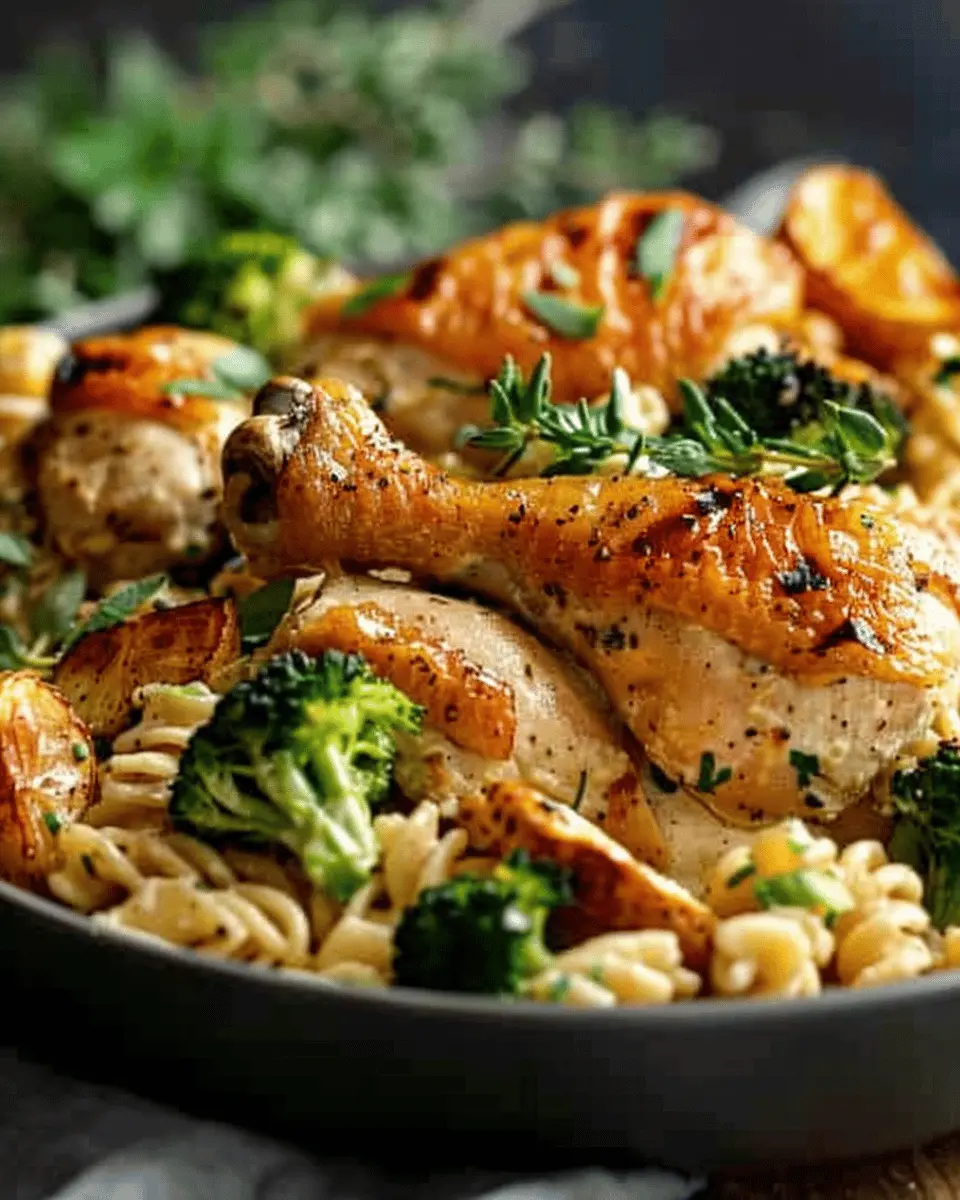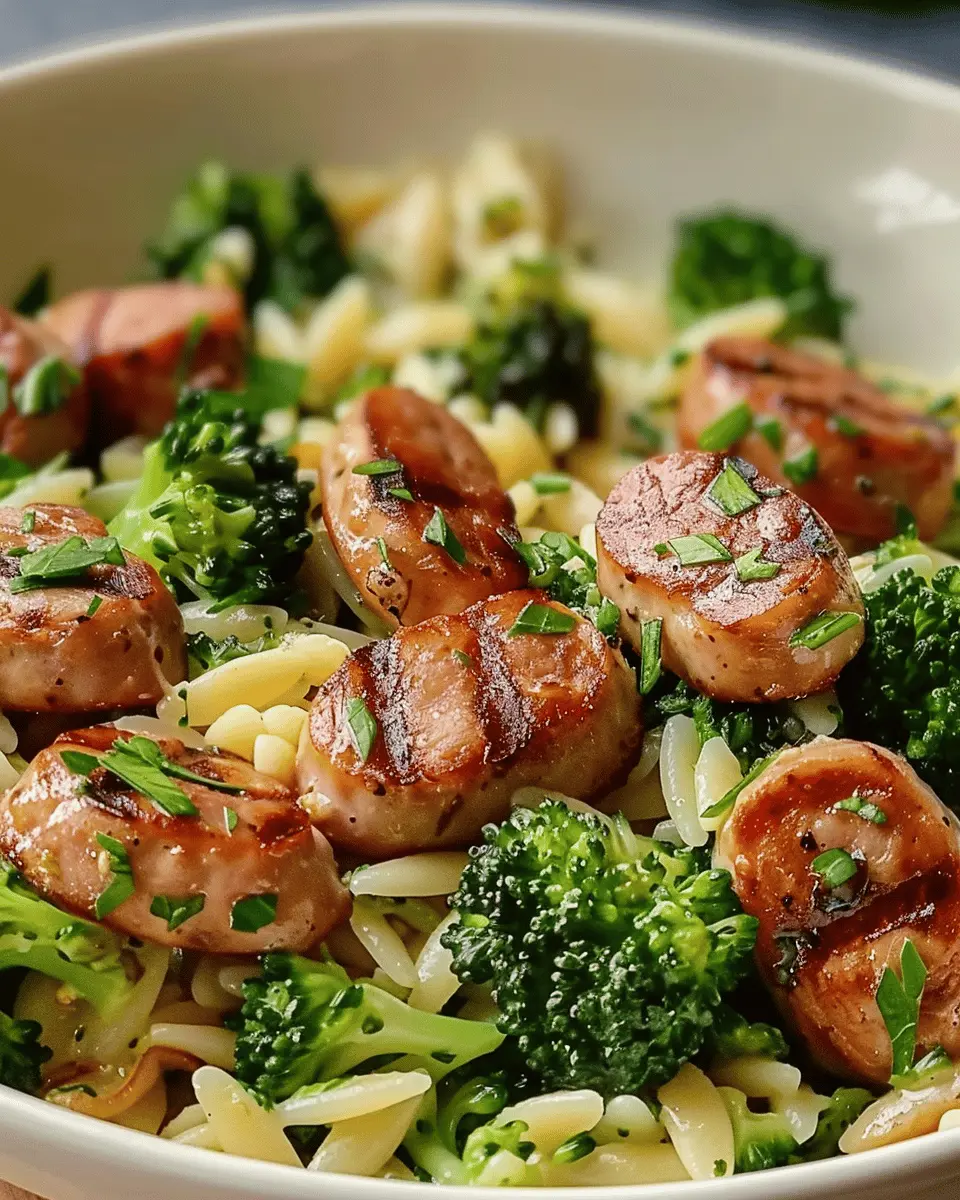Introduction to Authentic Lo Mein
When you think of comfort food, Lo Mein often tops the list. Tossed noodles in a savory sauce, a medley of vegetables, and perhaps some protein—is there anything more satisfying? While takeout from your favorite Chinese restaurant is undeniably convenient, making authentic Lo Mein at home brings a whole new level of satisfaction to your dining experience. Let’s dive into why homemade is genuinely better!
Why Homemade is Better than Takeout
Choosing to whip up your own authentic Lo Mein rather than relying on takeout has several benefits that might surprise you:
-
Quality Ingredients: When you cook at home, you control what goes into your dish. You can opt for fresh, organic vegetables and high-quality noodles that deliver a superior flavor and texture. This not only elevates the taste but also provides you with a healthier meal overall.
-
Customization: Takeout does offer a variety of options, but when you’re cooking, the power of customization is entirely in your hands. Want extra garlic, a bit more spice, or a different protein altogether? Go for it! Personalizing your dish means it’s tailored to your exact preferences.
-
Cost-Effective: Frequent takeout can really add up. According to a 2023 study by the Bureau of Labor Statistics, Americans spend an average of $3,000 annually on dining out. Making your favorite meal at home can help save money while still enjoying food you love.
-
Culinary Skills: Cooking is an art, and every dish you prepare helps improve your skills. Making authentic Lo Mein can be a fun way to experiment with flavors and techniques, fostering a sense of accomplishment in your culinary journey.
-
Social Experience: Cooking for friends or family can turn an ordinary meal into a special event. Picture everyone gathered in your kitchen, chatting, and enjoying the aroma of delicious noodles wafting through the air. It’s a recipe for laughter and connection.
Bringing the taste of authentic Lo Mein into your home is not just about satisfying hunger; it’s about embracing the joy of cooking. So grab those chopsticks, fire up the stovetop, and get ready to impress your palate with your homemade creation. Don’t forget to check culinary sites like Serious Eats for inspiration and tips on perfecting your technique!
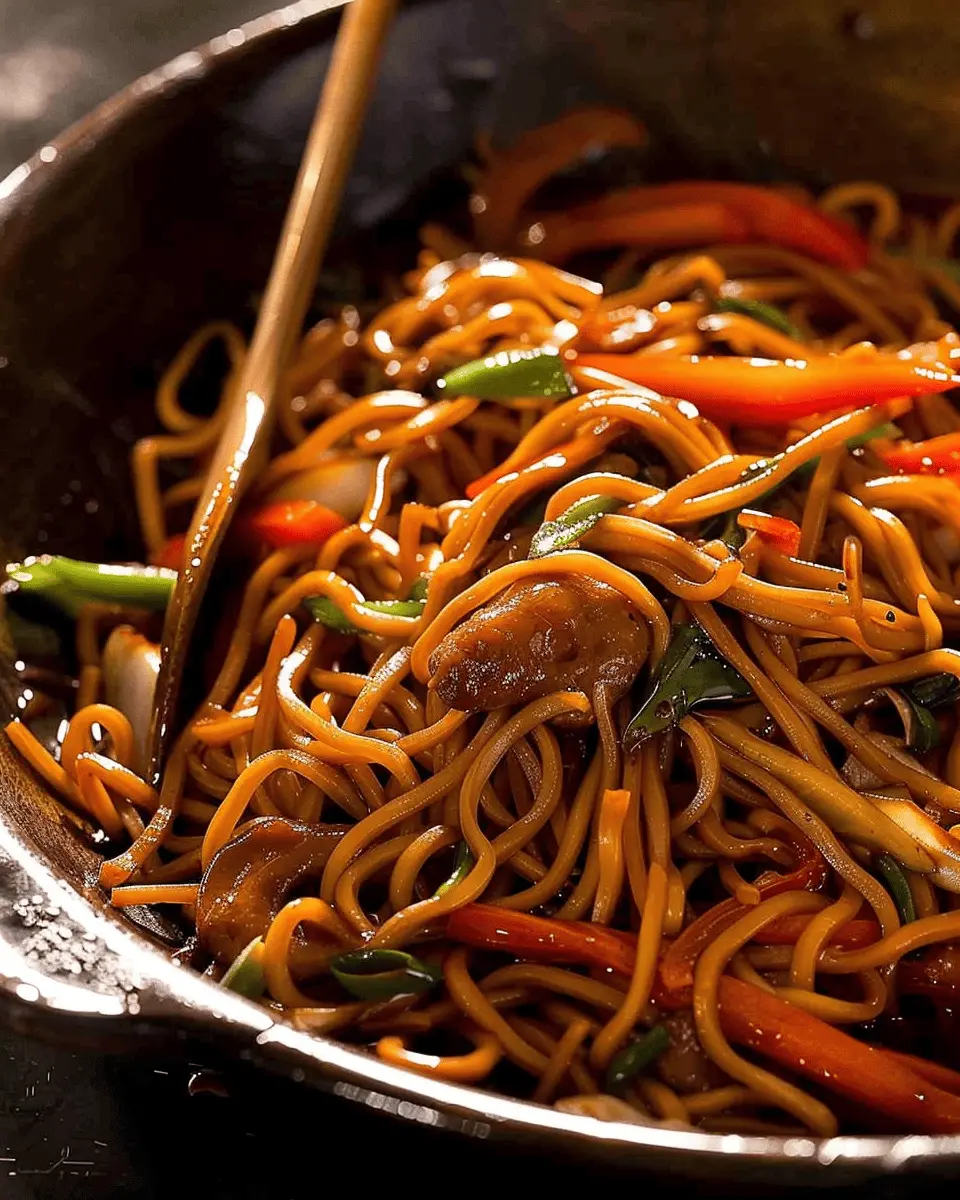
Ingredients for Authentic Lo Mein
Essential ingredients for traditional lo mein
Creating authentic lo mein starts with the right ingredients. You’ll want to gather:
- Noodles: Look for egg noodles or, for a gluten-free option, rice noodles. They form the base of your dish, providing a chewy texture.
- Vegetables: Classic choices include bell peppers, carrots, bok choy, and green onions. Fresh produce not only enhances flavor but also adds a pop of color.
- Protein: Chicken, beef, shrimp, or tofu are popular options. Each option brings unique flavors, making it versatile for any palate.
- Sauce: The key to that delicious umami flavor lies in a blend of soy sauce, oyster sauce, and sesame oil. For a deeper dive into sauces, check out sources like Serious Eats or Bon Appétit.
Optional add-ins for customization
While traditional ingredients are essential, don’t hesitate to customize your authentic lo mein! Consider adding:
- Mushrooms: Shiitake or button mushrooms for an earthy touch.
- Nuts: For crunch, try adding cashews or peanuts.
- Extra spices: A dash of chili oil or sriracha can elevate the flavor.
Feel free to experiment—after all, cooking should be fun! What will you make your lo mein signature?
Preparing Authentic Lo Mein
Creating authentic lo mein at home can seem intimidating, but it’s truly a straightforward process that turns out delicious every time. With fresh ingredients and a simple approach, you can impress your friends during a cozy dinner night or whip up a quick meal after a long day. Let’s break it down step-by-step.
Begin with the Noodles
To start, you’ll need to source the right kind of noodles. Authentic lo mein uses wheat-based egg noodles, which gives the dish its characteristic taste and texture. You can usually find them in the Asian aisle of your local supermarket or at specialty Asian grocery stores.
- Cooking the noodles: Bring a large pot of water to a boil and add the noodles. Cook them according to the package instructions—usually around 5-6 minutes—until they’re just al dente.
- Draining: Drain the noodles and rinse them under cold water to stop the cooking process. This step is crucial, as it prevents them from becoming mushy once you stir-fry.
Feeling adventurous? Consider trying homemade egg noodles! It’s a bit more work, but the taste and texture are well worth it for that authentic experience. Check out this homemade noodle recipe for inspiration.
Fresh Vegetables Make a Big Difference
The next step is to gather and chop your vegetables. Lo mein is incredibly versatile, allowing you to customize it with your favorites. Here are some suggestions:
- Bell peppers (red and green)
- Carrots
- Broccoli
- Snow peas
- Green onions
Chop them into bite-sized pieces to ensure even cooking. This is where you can really get creative. According to EatingWell, having a rainbow of veggies not only looks appealing but also provides various nutrients essential for a balanced meal.
Whisking a Flavorful Sauce
An authentic lo mein is nothing without a delicious sauce to tie everything together. Here’s a simple sauce that’s packed with flavor:
- 3 tablespoons soy sauce
- 1 tablespoon oyster sauce
- 1 tablespoon hoisin sauce
- 1 teaspoon sesame oil
- 1 teaspoon cornstarch (mixed with 1 tablespoon water) to thicken
Simply whisk these together in a bowl until well combined. This mixture gives your lo mein that umami kick that makes it so addictive. Don’t forget to adjust the quantities to suit your taste preferences—some people like it a bit sweeter or saltier.
Stir-Fry Like a Pro
Now comes the fun part! In a large pan or wok over medium-high heat, add a tablespoon of vegetable oil. Once it’s hot, toss in your chopped vegetables.
- Stir-frying: Cook them for 2-3 minutes until they start to soften.
- Add protein (optional): Chicken, shrimp, or tofu are excellent additions to make your dish heartier.
- Combine: Push the veggies to one side and add your protein to the other side of the pan.
After everything is cooked through, it’s time to combine all your ingredients.
Bringing It All Together
Once your veggies (and protein) are ready, it’s time to unite everything with your cooked noodles and whisked sauce.
- Add the noodles: Gently toss them into the pan mixing well with the vegetables and proteins.
- Pour in the sauce: This is where the magic happens! Pour the sauce over the mixture, making sure everything is coated.
- Final stir-fry: Keep everything moving for an additional 2-3 minutes until everything is heated through and beautifully mixed.
There you have it—your very own authentic lo mein ready to enjoy! Serve it hot, perhaps with a sprinkle of sesame seeds and a few sliced green onions on top for that authentic touch. Whether you decide to share or keep it all to yourself, this delightful dish is sure to please.
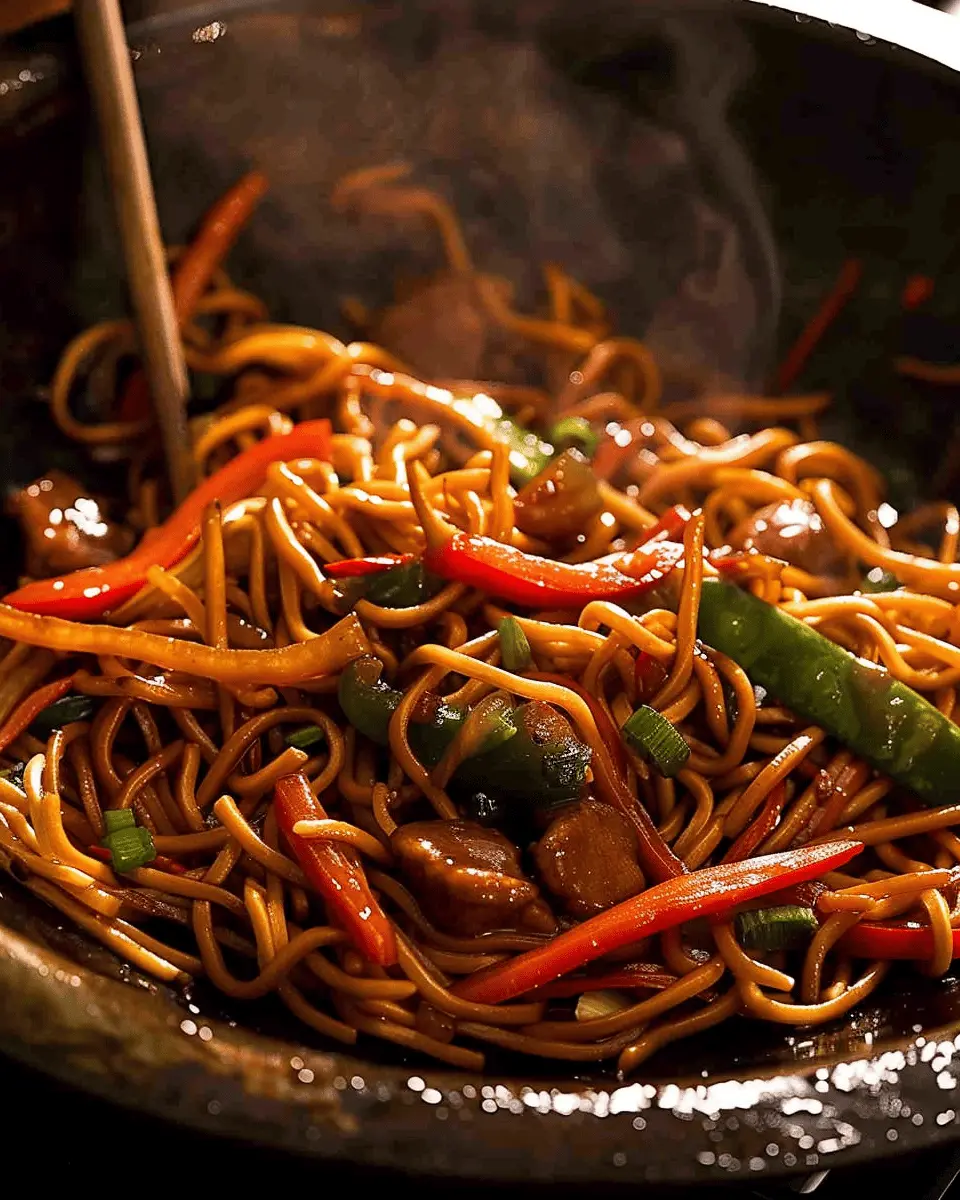
Variations on Authentic Lo Mein
When it comes to authentic lo mein, the possibilities are endless. This versatile dish can be tailored to suit various dietary preferences and tastes. Let’s dive into some delightful variations that will keep your taste buds excited!
Vegetarian Lo Mein
Craving a veggie-packed plate? Vegetarian lo mein is your answer! Use a variety of colorful vegetables like bell peppers, snap peas, and carrots. Tofu is a great protein replacement, soaking up all the delicious flavors of the soy sauce and sesame oil. Sprinkle in some crushed peanuts for added texture and a pop of flavor. For tips on the best vegetables to use, check out this article from Food Network.
Chicken Lo Mein
If you’re a fan of meat, chicken lo mein is a classic choice. Simply sauté bite-sized chicken pieces until golden brown, then toss them into the mix with your favorite veggies and noodles. A splash of oyster sauce can elevate this dish, giving it that authentic restaurant taste. Did you know that chicken is a great source of lean protein? It’s an excellent way to fuel your busy lifestyle!
Shrimp Lo Mein
Seafood lovers will adore shrimp lo mein. The subtle sweetness of shrimp pairs perfectly with the savory noodles. What’s more, shrimp cooks quickly—just sauté for a few minutes, and you’re set. To keep things fresh, consider adding a sprinkle of green onions and a dash of chili flakes for an extra kick.
Gluten-Free Lo Mein Options
For those with gluten sensitivities, fear not! You can still enjoy authentic lo mein. Opt for gluten-free noodles made from rice or mung bean starch. Coconut aminos or tamari make excellent substitutes for soy sauce, ensuring you don’t miss out on that rich flavor. It’s always rewarding to create a delightful dish that everyone can enjoy together.
Cooking Tips and Notes for Authentic Lo Mein
Selecting the Right Noodles
To create authentic lo mein, the first step is to choose the right noodles. Look for fresh egg noodles, which have a delightful chewiness and soak up flavors beautifully. If fresh noodles aren’t available, you can use dried lo mein noodles or even spaghetti in a pinch. Just be sure to cook them until they’re al dente, as they will continue to cook in the stir-fry. A fantastic resource on noodle types can be found here.
Best Practices for Stir-Frying
Stir-frying is where the magic happens! Make sure to preheat your wok or pan, as a hot cooking surface ensures even cooking. Use a high-quality oil with a high smoke point, such as canola or peanut oil. And remember, don’t overcrowd the pan—cook in batches if necessary to achieve that golden, slightly crispy texture that’s a hallmark of lo mein.
How to Achieve That Authentic Flavor
For that authentic lo mein taste, balance is key. Use a mix of soy sauce, oyster sauce, and a touch of sesame oil for a rich flavor blend. Fresh garlic and ginger will elevate your dish, while veggies like bok choy and shiitake mushrooms add depth. Want an extra layer of umami? Consider adding a sprinkle of white pepper or chopped scallions right before serving. Trust me, your taste buds will thank you!
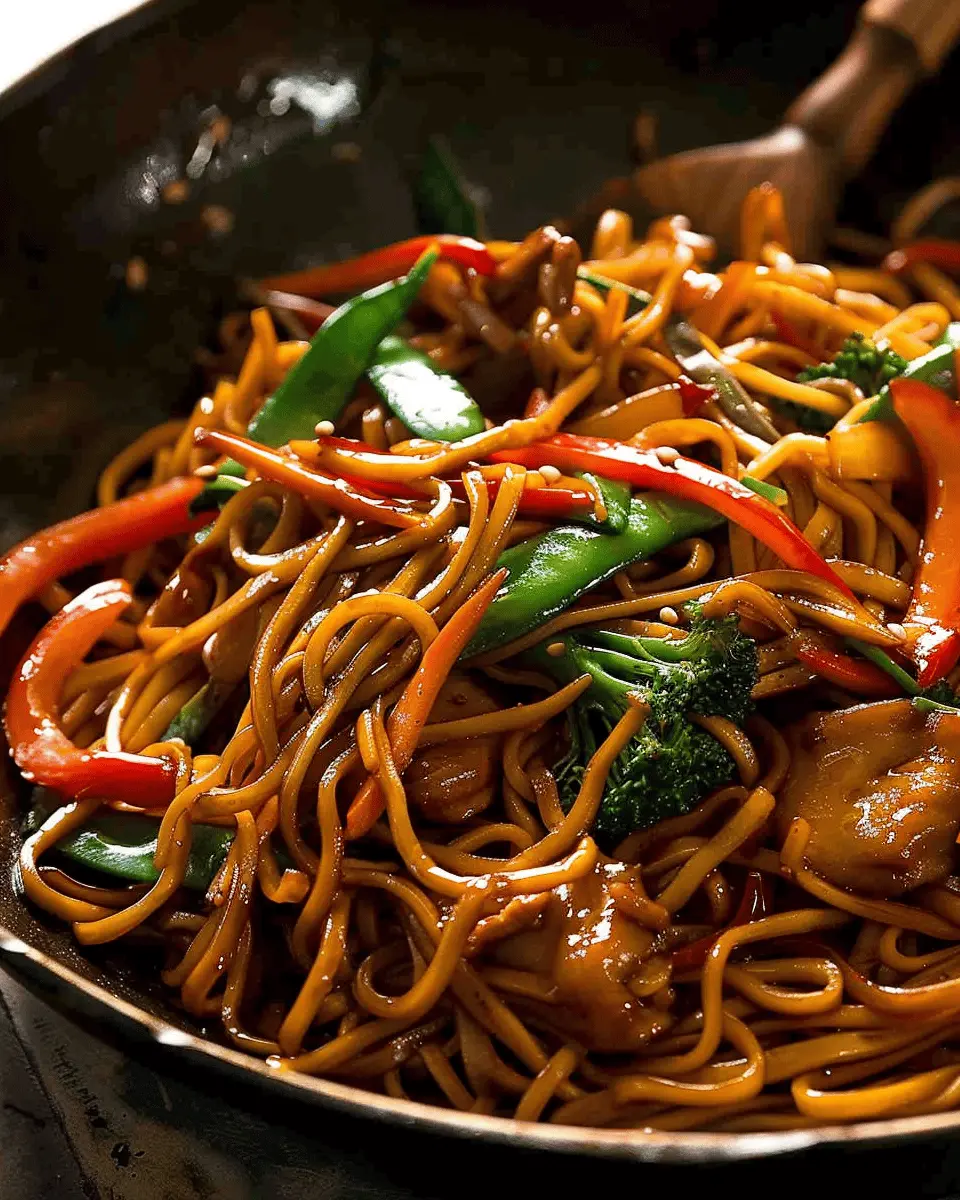
Serving Suggestions for Authentic Lo Mein
Pairing with Sides
When you’re enjoying authentic lo mein, think about what sides could enhance that meal. A classic companion is spring rolls—they’re light, crispy, and add a delicious crunch. You might also consider serving it with steamed dumplings for a hearty touch. For a fresh contrast, a simple cucumber salad drizzled with rice vinegar can cleanse the palate beautifully.
Creative Plating Ideas
Presentation can elevate your authentic lo mein experience. Try serving it in a deep bowl, and push the noodles to one side, allowing a generous scoop of colorful vegetables and protein to take center stage. Garnish with chopped green onions and a sprinkle of sesame seeds for that gourmet appeal. Consider using chopstick rests to add an authentic touch to your table setting.
Making it a Complete Meal
To transform your dish into a complete meal, incorporate a protein punch. Grilled chicken, shrimp, or tofu works wonders. Want to go all out? Prepare a homemade hot and sour soup to kick off your meal. The combination of flavors and textures will surely impress your guests or even satisfy your own cravings. Dive deeper into pairing ideas and components from The Spruce Eats to take your lo mein to the next level!
Time Breakdown for Authentic Lo Mein
When it comes to making authentic lo mein, time management is key to enjoying a delicious homemade dish without feeling overwhelmed. Here’s how the time breaks down:
Preparation Time
Getting everything prepped is crucial—chopping your veggies and marinating proteins will take about 20 minutes. It’s a good idea to gather all your ingredients ahead of time. For a deeper dive into ingredient prep, you can check out this helpful guide on ingredient manipulations.
Cooking Time
Once the prep is done, the cooking process is pretty quick. You’ll need around 15 minutes to stir-fry everything to perfection. High heat is your friend here, so don’t be shy!
Total Time
Ultimately, you’re looking at a 35-minute total time to serve up a fresh plate of authentic lo mein. Perfect for a busy weeknight or a relaxing weekend when you want something special without too much fuss.
Whether it’s a date night or just a cozy evening at home, this dish will make you feel like a culinary pro!
Nutritional Facts for Authentic Lo Mein
When you indulge in authentic lo mein, it’s nice to know what you’re putting on your plate. Each serving offers a satisfying balance of nutrients that can fit well into a busy lifestyle.
Calories per serving
A single serving of authentic lo mein typically contains around 400-500 calories, depending on the specific ingredients and portion size. This makes it a wholesome meal option for lunch or dinner without going overboard.
Protein content
You can expect about 15-20 grams of protein per serving, courtesy of the noodles and any added proteins like chicken or shrimp. This is a great way to fuel your day, especially if you’re always on the go.
Breakdown of key nutrients
- Carbohydrates: Primarily from the noodles, providing energy for your busy day.
- Fat: Usually low, particularly if you choose lean proteins and fresh vegetables.
- Vitamins and minerals: Loaded with veggies like bell peppers and carrots, adding essential vitamins along with dietary fiber.
If you’re interested in a detailed breakdown of nutrients, you might want to check out resources like the USDA FoodData Central to find specific values based on your ingredients. Understanding the nutritional aspects can empower you to make better choices without sacrificing flavor!
FAQ about Authentic Lo Mein
How can I make my lo mein more flavorful?
If you’re looking to elevate your authentic lo mein, there are several simple ways to pack in the flavor. Consider these tips:
- Use fresh ingredients: Opt for fresh vegetables and proteins, such as vibrant bell peppers, crunchy bok choy, or tender chicken. Fresh produce enhances the overall taste.
- Experiment with sauces: Traditional lo mein often relies on soy sauce, but try adding a splash of sesame oil, oyster sauce, or even a hint of chili paste for an exciting twist.
- Season appropriately: Don’t shy away from spices like garlic and ginger. These aromatics add depth to your dish. According to culinary experts, minimizing blandness is key to a standout meal.
Can I store leftovers?
Definitely! Storing leftover authentic lo mein is a breeze. Place your lo mein in an airtight container and refrigerate it for up to three days. When you’re ready to enjoy it again, simply heat it in a skillet or microwave with a splash of water or broth to keep it moist. A quick stir can refresh those flavors, making it almost as good as the first serving! For more tips on safe food storage, you can check out guidelines from the USDA.
What can I substitute for lo mein noodles?
If you can’t find authentic lo mein noodles, don’t worry! There are plenty of alternatives that work wonderfully:
- Egg noodles: They closely mimic the texture of lo mein noodles.
- Spaghetti: In a pinch, spaghetti is an easily accessible substitute.
- Rice noodles: For a gluten-free option, use rice noodles, although they may yield a different texture.
Feel free to think outside the box and experiment! After all, cooking is all about using what you have and making it your own.
Conclusion on Authentic Lo Mein
Recap of why homemade lo mein is worth the effort
Making authentic lo mein at home is not just about satisfying a craving; it’s an opportunity to create a dish bursting with fresh flavors and textures. When you whip up this meal in your kitchen, you control the ingredients and can customize it just the way you like. Plus, did you know that making your own noodles can save ingredients? According to a study from the Culinary Institute of America, homemade pasta can have half the calories compared to store-bought.
Encouragement to try the recipe at home
So why not roll up your sleeves and give this recipe a go? The joy of seeing your loved ones enjoy a meal that you put together is one of the most rewarding experiences. Plus, it’s easier than you think! With just a bit of prep and a couple of essential ingredients, you can create a restaurant-quality dish. If you’re looking for some inspiration, check out Serious Eats’ guide on different noodle types to really nail that authentic taste. Get ready to explore the delicious world of homemade lo mein!
PrintAuthentic Lo Mein: Indulgent Comfort That’s Better Than Takeout
Learn how to make Authentic Lo Mein that’s better than takeout!
- Prep Time: 10 minutes
- Cook Time: 15 minutes
- Total Time: 25 minutes
- Yield: 4 servings 1x
- Category: Main Dish
- Method: Stir-Frying
- Cuisine: Chinese
- Diet: Vegetarian
Ingredients
- 8 ounces lo mein noodles
- 2 tablespoons vegetable oil
- 1 cup sliced bell peppers
- 1 cup sliced carrots
- 1 cup sliced onions
- 2 cloves garlic, minced
- 3 tablespoons soy sauce
- 1 tablespoon sesame oil
- 1/2 cup bean sprouts
- 2 green onions, sliced
Instructions
- In a large pot, bring water to a boil and cook the noodles according to package instructions. Drain and set aside.
- In a wok or large skillet, heat the vegetable oil over medium-high heat.
- Add the sliced bell peppers, carrots, and onions to the pan and stir-fry for about 5 minutes.
- Add the minced garlic and stir-fry for an additional minute.
- Stir in the cooked lo mein noodles, soy sauce, and sesame oil, tossing everything together.
- Finally, add the bean sprouts and green onions, cooking for another 2 minutes before serving.
Notes
- Feel free to add your favorite protein such as chicken, beef, or tofu.
- For added flavor, marinate the protein in soy sauce before cooking.
Nutrition
- Serving Size: 1 bowl
- Calories: 400
- Sugar: 5g
- Sodium: 800mg
- Fat: 15g
- Saturated Fat: 2g
- Unsaturated Fat: 10g
- Trans Fat: 0g
- Carbohydrates: 60g
- Fiber: 3g
- Protein: 10g
- Cholesterol: 0mg
Keywords: Authentic Lo Mein

